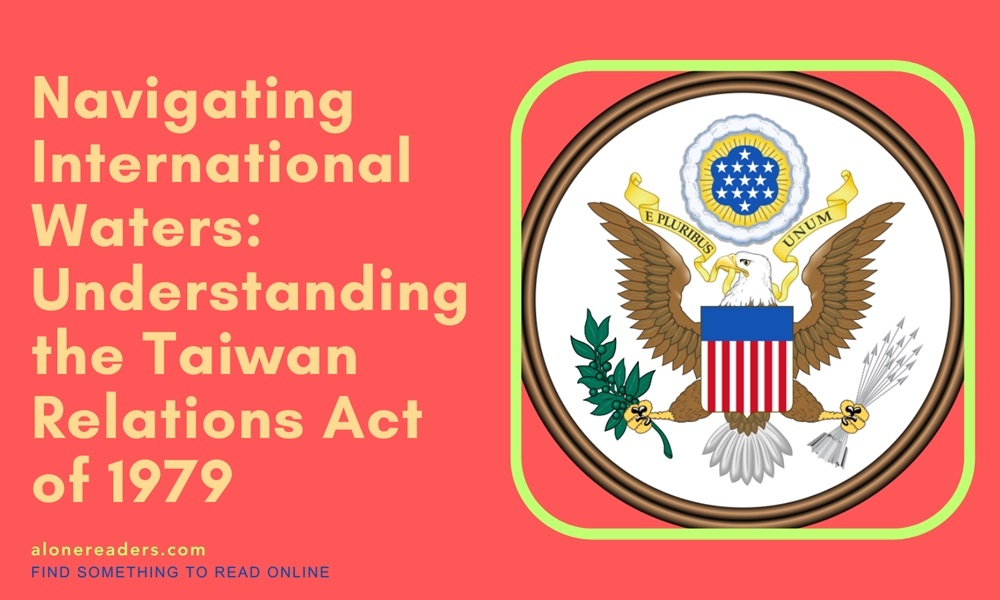
In the landscape of international politics, few acts have played as significant a role in shaping a country's foreign relations as the Taiwan Relations Act (TRA) of 1979. This pivotal piece of legislation not only sculpted the framework for relations between the United States and Taiwan but also marked a defining moment in the Cold War era's diplomatic endeavors.
The Shift in Sino-American Relations
To fully grasp the importance of the TRA, one must understand the historical context that led to its creation. The 1970s were a period of transformative change in international relations, particularly between the United States and the People's Republic of China (PRC). The U.S., which had recognized the Republic of China (ROC) in Taiwan as the legitimate government of China since 1949, began reevaluating its stance in the early 1970s.
The United States' Diplomatic Pivot
The pivotal moment came in 1971 when the United Nations recognized the PRC as the sole legitimate representative of China, leading to the ROC's expulsion. This global shift in recognition was further solidified by U.S. President Richard Nixon's historic 1972 visit to Beijing. In 1978, President Jimmy Carter formally announced the decision to sever diplomatic ties with Taiwan and establish formal relations with the PRC, effective January 1, 1979.
Legislative Response to Diplomatic Changes
The announcement of the shift in diplomatic recognition from Taipei to Beijing sent shockwaves through the U.S. political landscape. Concerned about the implications for Taiwan and the potential vacuum of American influence, Congress moved to pass the Taiwan Relations Act in April 1979.
Key Provisions of the TRA
The TRA was not a typical diplomatic treaty but a domestic U.S. law that laid out the framework for continued informal relations with Taiwan. It included several critical components:
Preservation of Commercial and Cultural Relations: Despite the lack of formal diplomatic ties, the TRA allowed for the maintenance of commercial, cultural, and other unofficial relations between the people of the United States and Taiwan.
Security Commitments: Perhaps the most significant aspect of the TRA was the commitment to provide Taiwan with defensive arms. The Act did not offer an explicit security guarantee but stated that any efforts to determine Taiwan's future by non-peaceful means, including boycotts or embargoes, would be considered a threat to the peace and security of the Western Pacific area and of grave concern to the United States.
Establishment of the American Institute in Taiwan (AIT): To facilitate these unofficial relations, the TRA led to the creation of the AIT, a private, nonprofit corporation that performs citizen and consular services typically handled by formal diplomatic missions.
Reinforcing Regional Stability
The TRA played a crucial role in maintaining stability across the Taiwan Strait. By providing Taiwan with the means to defend itself while not explicitly recognizing it as an independent state, the TRA has been a balancing act of diplomacy. It reassured Taiwan of American support while not overtly antagonizing the PRC.
Influencing U.S. Foreign Policy
The Act has profoundly impacted U.S. foreign policy in East Asia. It established a precedent for how the U.S. could maintain substantive relations with entities it does not formally recognize, a concept that has influenced its approach to other international issues.
Adapting to New Challenges
In the decades since its passage, the TRA's relevance has not diminished. The rise of China as a global power and the evolving security dynamics in the Indo-Pacific region have brought renewed attention to the Act. The U.S. continues to navigate the delicate balance between its commitments to Taiwan under the TRA and its broader relationship with China.
The Future of U.S.-Taiwan Relations
As geopolitical tensions fluctuate, the TRA remains a cornerstone of U.S.-Taiwan relations. Its ability to adapt to changing circumstances while maintaining its foundational principles has been a testament to its enduring significance.
The Taiwan Relations Act of 1979 is more than just a legislative document; it's a testament to the complexities and necessities of diplomatic flexibility in international relations. The act's significance extends beyond the shores of Taiwan and the corridors of Washington, D.C., resonating in the broader context of global diplomacy and strategic balance. It has served as a stabilizing factor in the Taiwan Strait, a symbol of commitment to democratic allies, and a blueprint for managing delicate international relationships without formal diplomatic recognition.
In an era where geopolitical realities are constantly shifting, the principles enshrined in the TRA continue to offer guidance and insight. The act underscores the importance of strategic foresight, commitment to international norms, and the pursuit of peace and stability in a turbulent world. As we look to the future, the Taiwan Relations Act remains a key piece of the puzzle in understanding and navigating the intricate web of international relations, reminding us of the enduring power of thoughtful legislation in shaping the course of history.